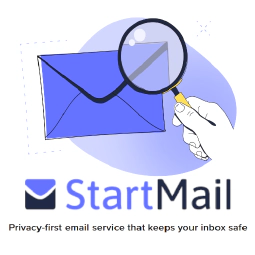Social Media Security Checklist: Safeguarding Your Online Presence

Table of Contents
In today’s digital age, social media has become an integral part of our lives. We use it to connect with friends, share our thoughts and experiences, and even conduct business. However, with the increasing use of social media, the need for security has also become paramount. This article will provide you with a comprehensive social media security checklist to help you protect your personal information and prevent unauthorized access to your accounts.
Key Takeaways
- Understand the risks associated with social media and the importance of securing your accounts.
- Manage privacy settings on social media platforms to control who can see your information.
- Avoid oversharing on social media to protect your personal and professional reputation.
- Create strong and unique passwords for your social media accounts.
- Enable two-factor authentication for an extra layer of security.
Social Media Security Checklist:
1. Privacy settings and information sharing controls:
Protecting your personal information and maintaining privacy on social media platforms is essential to safeguard against unauthorized access and potential misuse. Follow these best practices to enhance your privacy settings and information sharing controls:
Review and adjust privacy settings on social media platforms to control the visibility of your personal information. Each platform offers different privacy options, allowing you to limit who can see your posts, photos, and personal details. Regularly review and update these settings based on your preferences and the level of privacy you desire.
Regularly audit and update your connections, friends, and followers. Ensure that your social media networks consist of trusted individuals. Remove or block any suspicious or unknown connections, and periodically review your friend or follower lists to eliminate unfamiliar accounts.
Limit the amount of personal and sensitive information shared on your social media profiles. Be mindful of the information you disclose, such as your full address, phone number, birthdate, or financial details. Avoid sharing sensitive information publicly to minimize the risk of identity theft or targeted attacks.
Exercise caution when granting access to third-party apps and websites through your social media accounts. Before authorizing access, carefully review the permissions requested by the app or website. Be selective and grant access only to trusted and reputable applications. Regularly review the list of authorized apps and revoke access for those no longer needed.
By following these practices, you can better protect your personal information and maintain control over your privacy on social media platforms.
For additional guidance on managing privacy settings and information sharing controls, consult the following resources:
- Facebook Privacy Settings
- Twitter Privacy and Safety Center
- Instagram Privacy and Security
- LinkedIn Privacy Settings
2. Recognizing and avoiding social media scams:
Protecting yourself and your employees from social media scams, phishing attempts, and other online threats is crucial. By following these security awareness best practices, you can mitigate the risks associated with social media usage:
Educate yourself and employees about common social media scams and phishing attempts. Stay informed about the latest tactics used by cybercriminals to deceive users and gain unauthorized access to personal information or corporate networks. Provide training or awareness programs to ensure that employees understand the risks and know how to identify and respond to potential threats.
Exercise caution when clicking on suspicious links or engaging with unknown individuals or groups on social media platforms. Cybercriminals often use enticing messages or deceptive tactics to trick users into clicking on malicious links or sharing sensitive information. Avoid clicking on links from untrusted sources and be cautious when interacting with unfamiliar accounts or messages.
Be skeptical of unsolicited messages or friend requests from unknown individuals. Scammers may attempt to initiate contact to gather information or deceive you into providing access to personal or financial data. Verify the identity of the sender before responding or accepting friend requests. Look for signs of suspicious behavior, such as misspellings, grammatical errors, or unusual requests.
Report and block suspicious accounts or activities on social media platforms. Most social media platforms provide mechanisms to report and block accounts involved in suspicious or malicious activities. If you encounter a suspicious account, report it to the platform’s support team and consider blocking the account to prevent further interactions.
By following these best practices, you can enhance your social media security posture and reduce the likelihood of falling victim to scams or phishing attempts.
3. Protecting personal and professional online reputation:
Managing your personal and professional reputation on social media is essential for maintaining a positive online presence. By following these reputation management best practices, you can protect your image and ensure that your social media interactions align with your personal and organizational goals:
Think before posting or sharing content that could have a negative impact on your personal or professional reputation. Once something is posted on social media, it can be difficult to remove or control its spread. Avoid sharing sensitive or controversial information that could potentially harm your reputation or the reputation of your organization.
Regularly monitor your social media profiles for any unauthorized activity or impersonation. Keep an eye out for any suspicious login attempts, unfamiliar connections or followers, or unauthorized changes to your profile. If you notice any unusual activity, take immediate action to secure your account and report any fraudulent behavior to the respective social media platform.
Maintain a professional tone and image on social media that aligns with your organization’s guidelines. Your social media presence should reflect your professional identity and promote a positive image. Be mindful of the language and content you share, ensuring it is appropriate and respectful. Review your organization’s social media policy to understand the expectations and guidelines for representing the company online.
Engage in positive and constructive conversations while avoiding conflicts or controversial discussions. Social media platforms provide opportunities for networking and exchanging ideas. Contribute to meaningful conversations, share valuable insights, and support others in your professional community. However, steer clear of engaging in heated debates or arguments that could damage your personal or professional reputation.
The Importance of Social Media Security
Understanding the Risks of Social Media
Social media platforms have become an integral part of our daily lives, allowing us to connect with friends, share updates, and stay informed. However, it’s important to be aware of the potential risks associated with using these platforms . By understanding the risks, you can take steps to protect your personal information and ensure the security of your social media accounts.
Best Practices for Securing Your Social Media Accounts
Securing your social media accounts is crucial to protect your personal information and maintain your online privacy. By following these best practices, you can significantly reduce the risk of unauthorized access and potential security breaches.
Protecting Your Personal Information

Managing Privacy Settings on Social Media Platforms
When it comes to managing privacy settings on social media platforms, it is crucial to prioritize the security of your personal information . By taking the necessary steps to protect your privacy, you can minimize the risk of unauthorized access and potential data breaches. Here are some key considerations to keep in mind:
Avoiding Oversharing on Social Media
When it comes to social media, it is crucial to be mindful of the information you share. Oversharing can have serious consequences, especially in terms of privacy and security. To remain private online, consider the following:
Preventing Unauthorized Access

Creating Strong and Unique Passwords
Creating strong and unique passwords is crucial for maintaining the security of your social media accounts . Passwords are the first line of defense against unauthorized access and should be treated with the utmost importance. Here are some key considerations when creating passwords:
Enabling Two-Factor Authentication
Enabling two-factor authentication is a crucial step in enhancing the security of your social media accounts. By adding an extra layer of protection, you can significantly reduce the risk of unauthorized access. Two-factor authentication requires users to provide two forms of identification before gaining access to their accounts. This typically involves entering a password and then verifying their identity through a second method, such as a unique code sent to their mobile device.
Implementing two-factor authentication offers several benefits:
- Enhanced Account Security: By requiring an additional form of identification, two-factor authentication adds an extra layer of security to your social media accounts.
- Protection Against Unauthorized Access: Two-factor authentication helps prevent unauthorized individuals from gaining access to your accounts, even if they have your password.
- Early Detection of Suspicious Activity : Two-factor authentication can alert you to potential unauthorized access attempts, allowing you to take immediate action to protect your accounts.
To enable two-factor authentication on your social media accounts, follow these steps:
- Go to the security settings of your social media platform.
- Look for the option to enable two-factor authentication.
- Choose the method you prefer for receiving the second form of identification, such as a text message or an authentication app.
- Follow the prompts to complete the setup process.
By enabling two-factor authentication, you can significantly enhance the security of your social media accounts and protect your personal information from unauthorized access.
Unauthorized access to sensitive information can have devastating consequences for individuals and organizations alike. It is crucial to implement robust security measures to prevent unauthorized access and protect valuable data. At SimeonOnSecurity’s Guides, we provide comprehensive resources and expert insights on cybersecurity practices . Our guides cover advanced techniques, practical tutorials, and the latest trends in areas such as version control, system administration, network management, and software development. Whether you are a beginner or an experienced professional, our detailed guides will help you enhance your skills and stay ahead of potential security threats. Visit our website today to explore our valuable knowledge and take proactive steps towards securing your digital assets.
Conclusion
In conclusion, social media security is of utmost importance in today’s digital age. Understanding the risks associated with social media and implementing best practices to secure your accounts can help protect your personal information and prevent unauthorized access. By managing privacy settings, avoiding oversharing, creating strong and unique passwords, and enabling two-factor authentication, you can significantly enhance the security of your social media presence. It is crucial to stay vigilant and regularly update your security measures to stay one step ahead of potential threats. Remember, prevention is better than cure when it comes to social media security. Take control of your online presence and safeguard your personal information.
Frequently Asked Questions
What is social media security?
Social media security refers to the measures and practices taken to protect personal information and accounts on social media platforms from unauthorized access, data breaches, and other security threats.
Why is social media security important?
Social media security is important because it helps safeguard personal information, prevents identity theft, protects against cyberbullying and harassment, and reduces the risk of falling victim to scams and phishing attacks.
What are the risks of social media?
The risks of social media include privacy breaches, identity theft, cyberbullying, online harassment, exposure to scams and phishing attacks, reputational damage, and the spread of misinformation.
How can I secure my social media accounts?
To secure your social media accounts, you should use strong and unique passwords, enable two-factor authentication, regularly update your privacy settings, be cautious about the information you share, and avoid clicking on suspicious links or downloading unknown files.
What are the best practices for managing privacy settings on social media platforms?
The best practices for managing privacy settings on social media platforms include reviewing and adjusting privacy settings regularly, limiting the visibility of personal information to only trusted connections, being selective about accepting friend requests or connection requests, and avoiding sharing sensitive information publicly.
How can I avoid oversharing on social media?
To avoid oversharing on social media, you should be mindful of the information you post, avoid sharing personal details such as your home address or phone number, be cautious about sharing your location in real-time, and think twice before posting about your travel plans or expensive purchases.






